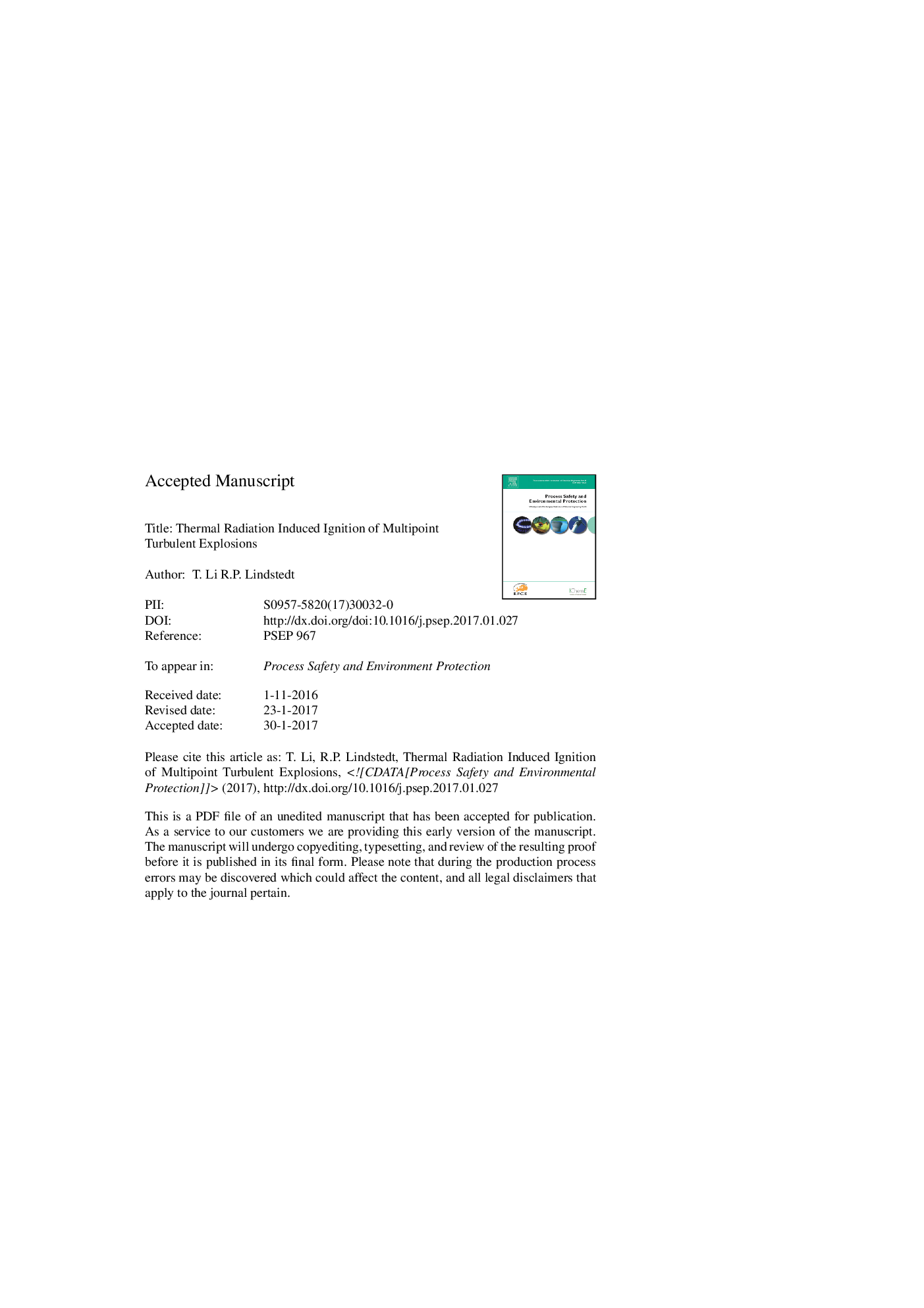| کد مقاله | کد نشریه | سال انتشار | مقاله انگلیسی | نسخه تمام متن |
|---|---|---|---|---|
| 4980975 | 1453333 | 2017 | 35 صفحه PDF | دانلود رایگان |
عنوان انگلیسی مقاله ISI
Thermal radiation induced ignition of multipoint turbulent explosions
ترجمه فارسی عنوان
تابش حرارتی باعث انجماد از انفجارهای چند ضلعی شد
دانلود مقاله + سفارش ترجمه
دانلود مقاله ISI انگلیسی
رایگان برای ایرانیان
کلمات کلیدی
انفجار آشفته، آتش سوزی ذرات، تابش حرارتی، گاز طبیعی، غنی سازی هیدروژن، فشار ضربه،
موضوعات مرتبط
مهندسی و علوم پایه
مهندسی شیمی
بهداشت و امنیت شیمی
چکیده انگلیسی
The severity of vapour cloud explosions is typically correlated with the peak over-pressure or, more accurately, with the total impulse caused by the pressure waves. The flame speed arising from strong (e.g. quasi-stable) turbulent deflagrations is frequently used to provide an indication of potential damage. However, conventional flame propagation mechanisms can present difficulties in terms of explaining the resulting damage. For example, the over-pressure in the Buncefield vapour cloud explosion was much higher than that predicted by conventional models. Alternative propagation mechanisms include intermittent localised strong explosions or detonations potentially supported by forward thermal radiation causing multi-point ignition of dust particles ahead of the advancing flame front. Such mechanisms are here explored using particles coated with acetylene black as the radiation target due to their relationship with soot emissions. A continuous wave laser operating in the near infrared was used as the radiation source with experiments performed in a flame tube using fuel lean CH4/H2/Air mixtures. It is shown that ignition kernels caused by irradiated particles can successfully be entrained into the main flow and/or recirculation zones formed around obstacles and cause multipoint explosions. The resulting relationship between fuel consumption ahead of the advancing flame and the evolution of the strength of the explosion is shown to be complex and typically lead to increased explosion durations with reduced peak pressures. It is also shown that chaotic pressure wave interactions can substantially increase both the explosion duration and the peak pressure depending on the timing of the radiation induced ignition.
ناشر
Database: Elsevier - ScienceDirect (ساینس دایرکت)
Journal: Process Safety and Environmental Protection - Volume 107, April 2017, Pages 108-121
Journal: Process Safety and Environmental Protection - Volume 107, April 2017, Pages 108-121
نویسندگان
T. Li, R.P. Lindstedt,
